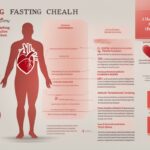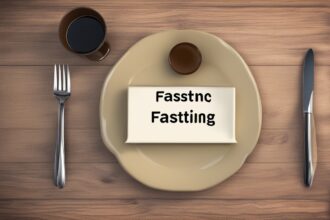Have you ever wondered what fasting really means and why it’s become such a buzzword in the health and wellness world? Whether you’re a beginner curious about the fasting definition or someone looking to deepen their understanding of this ancient practice, you’re in the right place. Fasting isn’t just about skipping meals—it’s a deliberate choice with roots in culture, religion, and modern health science. In this comprehensive guide, we’ll break down what fasting is, explore its various forms, uncover the science behind its benefits, and share practical tips to help you get started. Let’s dive into the world of fasting and see how it might fit into your life!
The Fasting Definition: What Does It Really Mean?
At its core, fasting is the voluntary abstinence from food, drink, or both for a specific period. The fasting definition can vary depending on cultural, religious, or health contexts, but the central idea remains the same: giving your body a break from constant digestion. Historically, fasting has been practiced for thousands of years across different civilizations, often tied to spiritual purification or self-discipline. Today, it’s increasingly popular for its potential health benefits, from weight management to improved mental clarity.
While the concept sounds simple, fasting isn’t a one-size-fits-all practice. It can range from short daily windows of not eating to extended periods lasting days or weeks. Understanding the meaning of fasting also involves recognizing its purpose—whether it’s for physical health, mental focus, or spiritual growth. Let’s explore the different types to get a clearer picture.
Types of Fasting: Finding the Right Approach for You
Not all fasting methods are created equal, and each type serves a unique purpose. Whether you’re exploring fasting for weight loss, detoxification, or other reasons, knowing the options can help you choose what aligns with your goals. Here are some of the most common types of fasting:
- Intermittent Fasting (IF): This involves cycling between periods of eating and fasting, such as the popular 16/8 method (fast for 16 hours, eat during an 8-hour window). It’s often used for weight loss and metabolic health (Horne et al., 2015).
- Water Fasting: A more intense approach where only water is consumed for a set period, typically 24–72 hours. It’s often done for detoxification but requires caution and medical supervision.
- Religious Fasting: Practices like Ramadan (fasting from dawn to sunset for a month) or Lent involve spiritual elements alongside physical restraint, often with specific food restrictions.
- Prolonged Fasting: This lasts several days to weeks and is usually done under medical guidance. It’s linked to deeper physiological changes like autophagy, the body’s cellular cleanup process (Mattson et al., 2017).
Each type of fasting comes with its own set of rules and benefits. If you’re new to this, starting with a gentler approach like intermittent fasting might be the way to go. But what exactly happens in your body when you fast? Let’s dig into the science.
The Science Behind Fasting: How It Impacts Your Body
When you hear about the benefits of fasting, it’s not just hype—there’s real science backing it up. Fasting triggers a cascade of physiological changes in your body, many of which can promote better health when done correctly. One of the key processes is the shift from using glucose (from food) to ketones (from stored fat) as an energy source. This metabolic switch often kicks in after 12–16 hours of fasting and is linked to improved insulin sensitivity and fat burning (Anton et al., 2018).
Another fascinating effect is autophagy, where your cells recycle damaged components, potentially reducing inflammation and protecting against diseases like cancer or Alzheimer’s (Mattson et al., 2017). Fasting also lowers levels of insulin and increases human growth hormone, which can aid in fat loss and muscle preservation (Ho et al., 1988). Additionally, studies suggest that fasting may improve brain health by enhancing focus and reducing oxidative stress (Longo & Mattson, 2014). However, it’s worth noting that these benefits depend on proper execution—fasting too long or without preparation can lead to fatigue, nutrient deficiencies, or other issues (Johnstone, 2015).
Understanding the science of fasting shows us it’s more than a diet trend—it’s a tool to reset and rejuvenate. But who can benefit from it, and how do you do it safely? Let’s break that down next.
Who Should Try Fasting, and Who Should Avoid It?
Fasting can be a powerful practice, but it’s not for everyone. If you’re generally healthy and looking to improve metabolic flexibility, manage weight, or boost mental clarity, fasting might be worth exploring. Research indicates it can be particularly beneficial for those with insulin resistance or type 2 diabetes, though always under medical supervision (Horne et al., 2015). However, certain groups should approach fasting with caution or avoid it altogether.
- Pregnant or Breastfeeding Women: Nutritional needs are higher during these periods, and fasting could harm both mother and baby.
- Individuals with Eating Disorders: Fasting may exacerbate unhealthy relationships with food and should be avoided.
- Those with Chronic Conditions: People with diabetes, low blood pressure, or other medical issues should consult a doctor before fasting.
- Children and Teens: Growing bodies need consistent nutrition, so fasting is generally not recommended for younger individuals.
If you’re unsure whether fasting is right for you, a quick chat with a healthcare provider can clear things up. Safety first! For those ready to try it, let’s talk about how to start.
Practical Tips for Starting Your Fasting Journey
Now that we’ve covered the fasting definition and its benefits, you might be eager to give it a shot. But jumping in without a plan can lead to hunger pangs, irritability, or even giving up too soon. Here are some actionable tips to ease into fasting and make it sustainable. I’ve tried many of these myself, and they’ve made a world of difference!
First, start small. If you’re new to fasting, don’t aim for a 24-hour fast right away. Begin with a 12-hour overnight fast—stop eating after dinner and delay breakfast until the next morning. Gradually extend the fasting window as your body adjusts. Hydration is also key; drink plenty of water during fasting periods to curb hunger and support your system. Speaking of hunger, it’s normal to feel it at first, but it often subsides as your body adapts to using stored energy (Johnstone, 2015).
Another tip is to plan your eating windows around your lifestyle. If you’re busiest in the mornings, schedule your meals for later in the day. And when you do eat, focus on nutrient-dense foods—think lean proteins, healthy fats, and plenty of veggies—to keep your body fueled. Lastly, listen to your body. If you feel dizzy, weak, or unwell, break your fast and reassess. Fasting should feel challenging but not unbearable.
Common Myths About Fasting Debunked
Despite its growing popularity, there are still plenty of misconceptions about fasting that might make you hesitant to try it. Let’s clear up a few myths surrounding the concept of fasting with facts. One common belief is that fasting slows your metabolism, but research shows that short-term fasting can actually boost metabolic rate by increasing norepinephrine levels (Ho et al., 1988). Another myth is that you’ll lose muscle mass—while this can happen with prolonged fasting without proper nutrition, moderate fasting with adequate protein intake helps preserve muscle (Anton et al., 2018).
Some also think fasting means starving yourself, but that’s far from the truth. When done right, fasting is a controlled, intentional practice that still allows for proper nourishment during eating windows. By understanding the real meaning of fasting, you can separate fact from fiction and approach it with confidence.
As we wrap up, let’s reflect on what we’ve learned about the fasting definition and its role in health and wellness. Fasting is more than just not eating—it’s a purposeful practice with deep historical roots and modern scientific backing. From intermittent fasting to water fasting, there’s a method for almost everyone, provided it’s done safely and with intention. The benefits, like improved metabolic health and mental clarity, are exciting, but so is the personal growth that comes from challenging yourself. If you’re considering fasting, start slow, stay hydrated, and listen to your body. Remember, it’s not a quick fix but a tool to enhance your well-being. So, what do you think—ready to give fasting a try? Let me know in the comments how it’s worked for you or if you’ve got questions. Here’s to exploring new ways to feel our best!
References
- Anton, S. D., Moehl, K., Donahoo, W. T., Marosi, K., Lee, S. A., Mainous, A. G., … & Mattson, M. P. (2018). Flipping the metabolic switch: Understanding and applying the health benefits of fasting. Obesity, 26(2), 254-268.
- Ho, K. Y., Veldhuis, J. D., Johnson, M. L., Furlanetto, R., Evans, W. S., Alberti, K. G., & Thorner, M. O. (1988). Fasting enhances growth hormone secretion and amplifies the complex rhythms of growth hormone secretion in man. Journal of Clinical Investigation, 81(4), 968-975.
- Horne, B. D., Muhlestein, J. B., & Anderson, J. L. (2015). Health effects of intermittent fasting: Hormesis or harm? A systematic review. American Journal of Clinical Nutrition, 102(2), 464-470.
- Johnstone, A. (2015). Fasting for weight loss: An effective strategy or latest dieting trend? International Journal of Obesity, 39(5), 727-733.
- Longo, V. D., & Mattson, M. P. (2014). Fasting: Molecular mechanisms and clinical applications. Cell Metabolism, 19(2), 181-192.
- Ageing Research Reviews, 39, 46-58.






